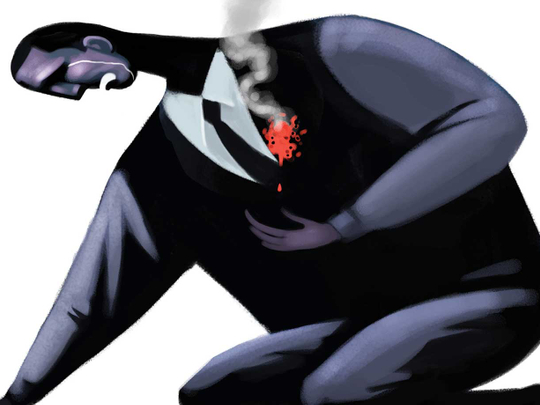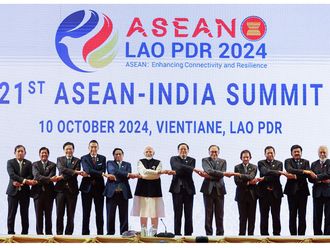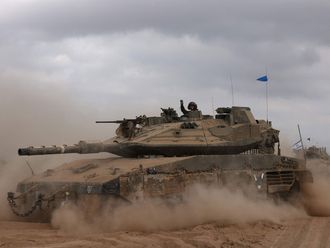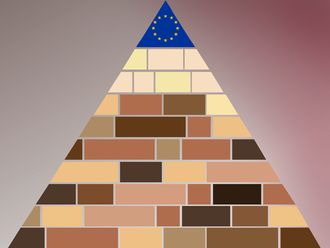
The tragic human toll continues to rise from the apparently coordinated terrorist bombings in Brussels on Tuesday. The attacks at the heart of the de facto capital of the European Union (EU) occurred only four days after the arrest in the city of Salah Abdeslam, Europe’s ‘most wanted man’ and one of the Belgians linked to the Paris atrocities in November. He was caught after an intense police shootout and Belgian authorities had previously warned of potential reprisals, of which, the attacks may well be one.
With the Belgian government still on the highest state of alert, and Brussels remaining mostly ‘locked down’, it appears that Daesh (the self-proclaimed Islamic State of Iraq and the Levant) was responsible for the attacks. In subsequent raids in Brussels, authorities have discovered a Daesh flag and also a stack of chemical products, plus explosive devices containing nails.
While key uncertainties remain, there are growing signs of potential connections between yesterday’s atrocities and Abdeslam’s arrest as underlined by the comments of Belgian Foreign Minister Didier Reynders, who said that Abdeslam “was ready to restart something in Brussels and it may be the reality because we have found a lot of weapons, heavy weapons ... and a new network around him in Brussels”. A similar point was made by Belgian Prime Minister Charles Michel who asserted that “what we feared has happened”.
Key questions are now being asked of the preparedness of Belgian and wider European intelligence agencies for such attacks. This will be fuelled by Belgian Interior Minister Jan Jambon’s comments that while “it was always possible that more attacks could happen, we could never have imagined something on this scale”.
While the full list of perpetrators of the attacks are not yet known, Belgian authorities said on Wednesday that two of the suicide bombers were brothers — Ebrahim Al Bakraoui and Khalid Al Bakraoui — who were reportedly involved in last Friday’s shootout in Brussels when Abdeslam was apprehended, and who were already being sought by authorities for their potential links to November’s Paris attacks. This and the fact that the Brussels atrocities appear to have been undertaken by Daesh, will fuel concerns of world leaders about European citizens radicalised and drawn to that terrorist group by its propaganda. And also the inter-related issue of foreign terrorists, who have returned to their home countries in Europe from the Middle East.
Suspected foreign fighter
Only last week, Belgian prosecutors named one of the two men still sought in connection with the Paris attacks as Najim Laachraoui, now also a suspect in the Brussels attacks, who reportedly travelled to Syria in 2013. Meanwhile, Ebrahim was detained and deported to the Netherlands from Turkey in 2015, Turkish authorities said on Wednesday, having warned Belgium last year that he was a suspected foreign fighter.
The numbers of such foreign terrorists who have already returned from the Middle East to their home countries is not certain. However, the International Centre for the Study of Radicalisation at Kings College, London, estimates that as many as 11,000 foreign fighters overall may have fought in Syria alone, from some 74 countries, the majority of them from Arab countries.
A central concern is that a significant number of these individuals, who include potentially as many as 2,000 from Western Europe, plus others from North America, Australia, South-east Asia, and Africa, will return battle-hardened with significantly greater terrorist capability and resolve. And it is believed that, per capita, Belgium is Europe’s biggest contributor of fighters to Syria, with Brussels a particular hot spot, despite the fact that Tuesday’s attacks have been condemned by Islamic groups in Belgium.
United States President Barack Obama has already expressed his “deep concern” about this issue, echoing comments of others, including British Prime Minister David Cameron. Moreover, FBI director James Comey has even warned about the prospect of a “future 9/11” caused by the increased flow of such foreign fighters from the Middle East. In his view, “all of us with a memory of the 1980s and 1990s saw the line drawn from Afghanistan ... to September 11. We see Syria as that, but in an order of magnitude worse”.
‘Vital steps’
What this underlines is that while Belgium was targeted on Tuesday, cities right across the continent are potentially vulnerable, as Paris showed last year. This fact has been recognised by leaders, including French President Francois Hollande, who noted that Tuesday’s attacks struck at “the whole of Europe”, and confirmed that the continent was at war with the terrorists and that “vital steps in the face of the seriousness of the threat” must be taken.
And the fact that this is a Europe-wide issue, which is reflected in the fact not only of tightening of security at key sites across the continent this week, but also that only days before the Brussels attacks, it was reported that security forces of the United Kingdom were working on the possibility that London could be hit by up to 10 attacks on a single day. What this underlines is the fear that Daesh’s sinister planning appears to be increasingly centred around multiple, sequenced atrocities.
With Daesh apparently behind the Brussels attacks, this will provide an unfortunate propaganda coup for the terrorist group at a time when its fortunes in Iraq and Syria may be ebbing, with some reports that it may have lost around a fifth of the territory under its control in those two countries over the past 14 months and potentially 40 per cent of its revenue, much of it from oil, according to research company IHS. In that sense, Tuesday’s terrible actions are a way for the network to try to re-emphasise to the global public that it has a continued destructive capability in Europe, despite recent setbacks in the Middle East.
Andrew Hammond is an Associate at LSE IDEAS (the Centre for International Affairs, Diplomacy and Strategy) at the London School of Economics.








